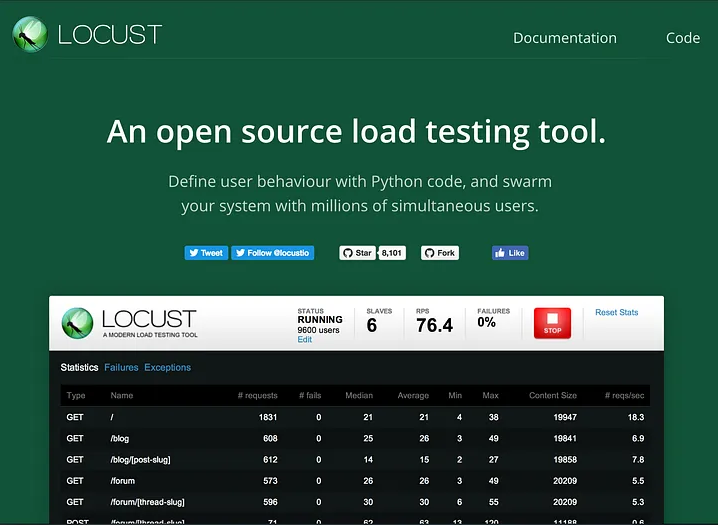Locust is an open-source, Python-based, and developer-friendly load testing tool that allows you to assess the performance and scalability of web applications and services. It is known for its simplicity and flexibility, making it a popular choice for load testing among developers, testers, and DevOps teams. Here are the key features and components of Locust:
Key Features of Locust:
- Python-Based: Locust uses Python as its scripting language, making it easy for developers to create and maintain load test scenarios. Test scenarios are written in Python code, which can be version-controlled and managed like any other codebase.
- Realistic User Simulation: Locust allows you to define user behavior using Python code. You can create complex user scenarios by specifying tasks, user flows, and user behaviors that accurately mimic real-world usage patterns.
- Distributed Load Generation: Locust supports distributed load testing, allowing you to distribute virtual users across multiple machines to simulate large user loads and distribute testing resources effectively.
- Web-Based User Interface: Locust provides a web-based user interface that displays real-time statistics, charts, and graphs to monitor test progress, user behavior, and performance metrics.
- Support for Multiple Protocols: Locust is not limited to HTTP. It supports various protocols like HTTP, WebSocket, and other custom protocols, making it suitable for testing different types of applications and services.
- Scalability: Locust is designed to be scalable and allows you to simulate a large number of users concurrently. Its distributed architecture enhances scalability further.
- Custom Metrics and Assertions: You can collect custom metrics and define assertions to check the correctness of responses, ensuring that the application behaves as expected under load.
- Integration with CI/CD: Locust can be easily integrated into CI/CD pipelines, enabling automated performance testing at different stages of the development and deployment process.
- Code Reusability: You can create and reuse libraries and functions in Python, making it easy to modularize and maintain your test scripts.
Key Components of Locust:
- User Tasks: User tasks are Python functions that define user actions. You can define tasks for simulating user interactions, such as making HTTP requests, parsing responses, and handling cookies.
- Swarming: Swarming involves creating and running virtual users (referred to as “swarms”) that execute user tasks. You can specify the number of users and the rate at which they start and stop their tasks.
- Web User Interface: Locust’s web user interface provides real-time insights into the progress of the test, including metrics, charts, and graphs for monitoring performance.
Locust’s simplicity, scalability, and flexibility make it an attractive choice for teams looking to incorporate performance testing into their development and deployment processes. It excels in simulating realistic user behavior and load testing web applications and services.



